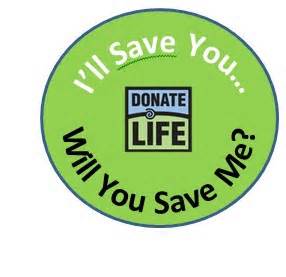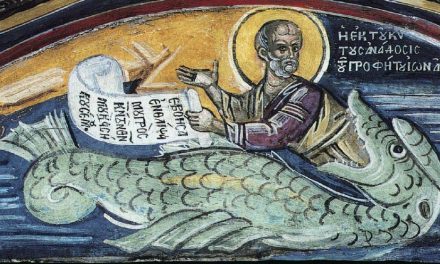 This is a brief synopsis and discussion of Part II of a report on Catholic perspectives on organ transplantation. The first part of the recently published On the Ethics of Organ Transplantation: A Catholic Perspective, along with names of collaborators, is discussed here, by my colleague Andrew Kim. It should be noted especially that this working document from the Anscombe Bioethics Center is meant as an aid to individuals and families considering organ donation. Many Catholics have questions about transplants and may be turned away from offering transplants because of theological worries; this report aims to set some of those questions at rest, while also clarifying some important distinctions between mainsteram
This is a brief synopsis and discussion of Part II of a report on Catholic perspectives on organ transplantation. The first part of the recently published On the Ethics of Organ Transplantation: A Catholic Perspective, along with names of collaborators, is discussed here, by my colleague Andrew Kim. It should be noted especially that this working document from the Anscombe Bioethics Center is meant as an aid to individuals and families considering organ donation. Many Catholics have questions about transplants and may be turned away from offering transplants because of theological worries; this report aims to set some of those questions at rest, while also clarifying some important distinctions between mainsteram
While Part I dealt with living organ donors, this second part discusses organ donation after death. Both Part I and Part II of the document address the goods of transplant medicine, and deem transplants to be an important and good part of medicine, because transplants “saves and transforms lives.” Organ donation can also be an expression of generosity of the person and bereaved family, and may even be part of a good grieving process.
Thus, the questions surrounding organ transplant have very little to do with whether transplant itself is a good idea, and much more with common end-of-life and consent concerns relating to transplants. That is, how do we know that death has occurred to the point that we are not taking a life in favor of someone else’s life (especially in light of the danger of making use of a person’s organs with an eye to financial gain)? How do we know proper consent, rather than coercion, has been obtained? And, is donation occurring with respect to medical urgency and good prospective outcome of transplant, rather than based on race, economic class, gender and sexual orientation, capacity to pay and other factors independent of medical need and outcome (xv.)
The collaborators begin with how Catholics understand death as the “total disintegration of that unitary and integrated whole that is the personal self,” (ii.) especially the separation of soul and body. Given this definition, the authors go on to discuss how to diagnose neurological and circulatory deaths, and deaths in children. At many points along the way, the authors also make note of how Catholic views about life and death are in conflict with some definitions used in secular professional biomedical associations.
“Neurological death” is one example. While, in the words of John Paul II, neurological death entails “the complete and irreversible cessation of all brain activity,” (iii.) the UK Royal Academy of Medical Royal Colleges articulates that death is the “irreversible loss of the capacity for consciousness, combined with the irreversible loss of the capacity to breathe.” The concern on the part of this document’s collaborators is that the Royal Academy’s definition does not underscore irreversible brain damage, and only includes one measure of brain function, that of breathing. While breathing is certainly one important function, the collaborators argue that a more comprehensive definition takes into account the holistic and integrated view of the body and soul that Catholics understand about human beings. The document then describes a few ways families can request evidence of neurological death.
“Circulatory death” is another way, indeed, a majority way, of determining whether death has occurred. One of the particular moral concerns is how soon after circulation has ceased, death can be declared. This is, of course, a debatable question in any case – because many times, circulation can be restored. The authors suggest following a definition of circulatory death that indicates “permanent” loss of circulatory function, rather than “irreversible” which is often the word in use in common definitions – so that we don’t run the risk of presuming death, for convenience’s sake (v.) As I think Jeff Bishop has discussed in his book The Anticipatory Corpse about euthanasia and physician suicide – it is all too easy to let presumptions, assumptions and questions about death dictate how the living negotiate themselves into dying…because they presume they WILL die, not because they are dead. I think a similar problem resides here in these questions about organ transplant.
Heart transplant (vi.) after declaration of circulatory death is a particularly problematic case, therefore – one that is advised against, since a heart that can be transplanted and functional in another person would seem, by definition, to be a heart capable of resuscitation.
In relation to consent concerns, many of the problems articulated in part I remain after death. Trafficking in organs, coercion and other signs that proper consent is not present are serious moral concerns. Importantly, the collaborators argue that all people ought to become familiar with debates about death and organ transplants so that they can make good, informed decisions based on conscience while they are alive.
Toward the end of the document, particularly controversial concerns are addressed: embryonic and fetal tissue donation, transplantation of reproductive organs, non-human transplantations and donations of bodies for things other than therapeutic means (e.g. plasticization). While many of these are less pressing for people faced with the reality of transplantation questions, their inclusion demonstrates the breadth of the document for continued discussion.
There is a conclusion that offers several helpful questions for people thinking through death/dying and transplants.
My main remark here is to emphasize that the collaborators’ focus on criteria for death is especially crucial and will continue to be so – especially as we learn more and more about brain activity and death. Recent observations of patients in comas or in vegetative states who have been able to be roused, with demonstrable brain activity, is one such example.
The reading is likely to be difficult for lay people, but the topic is well worth reading and discussion. I even think that parishes might consider doing small adult group discussions over a period of weeks on this subject – with precisely the aim of helping people become familiar with these difficult debates.



